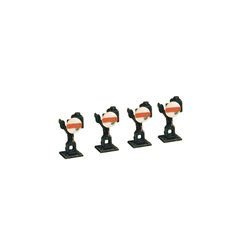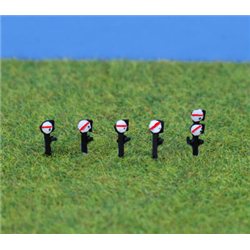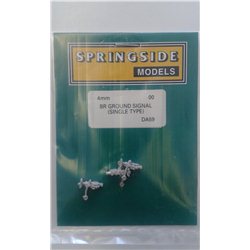Deciding where to place signals on a model railway layout can be extremely confusing as there are many rules to...
No products
Product successfully added to your shopping cart
There are 0 items in your cart. There is 1 item in your cart.
Search Tips
Christmas and New Year
Due to public holidays, orders will be next dispatched on Monday 29th.
If you select next day delivery at checkout, please note deliveries are not made on New Year's Day or Sundays.
The shop in Sandown is closed on Saturday 27th December and will reopen on Tuesday 30th December.
Tuesday 30th: 10am to 4.30pm - Wednesday 31st: 10am to 2.30pm - Thursday 1st: closed - Friday onwards: 10am to 4.30pm.
What are shunting signals?
Shunting signals are a type of railway signal that are commonly found in sidings and alongside regular signals. They are used in the same way as regular signals i.e. to authorise drivers to proceed, the difference being, the line ahead may not be clear of stationary traffic or obstruction.
Shunting signals are mostly used in situations where locomotives or trains need to manoeuvres onto a section or block of track that is not clear. This typically means places like sidings and stations where locomotives make shunting movements but they can be found at some crossovers and turnouts on the mainline too.
When a shunting signal gives permission, a driver may proceed, even if it's attached to a main signal showing red, however, because it's a shunting signal that's given the permission, the driver will be aware that they're not proceeding into a clear block of track and their route is set to direct the engine to a siding, awaiting rolling stock or a shunt limit.
Modern shunting signals are made up of three signal lights arranged in a triangle while older versions appear as a smaller version of a semaphore signal or a disc that rotates. Shunting signals are a common sight on Britain's railways the majority of which are placed at ground level so are easy to spot.
Click here to receive the tips weekly in your mailbox. You can unsubscribe at any time.










